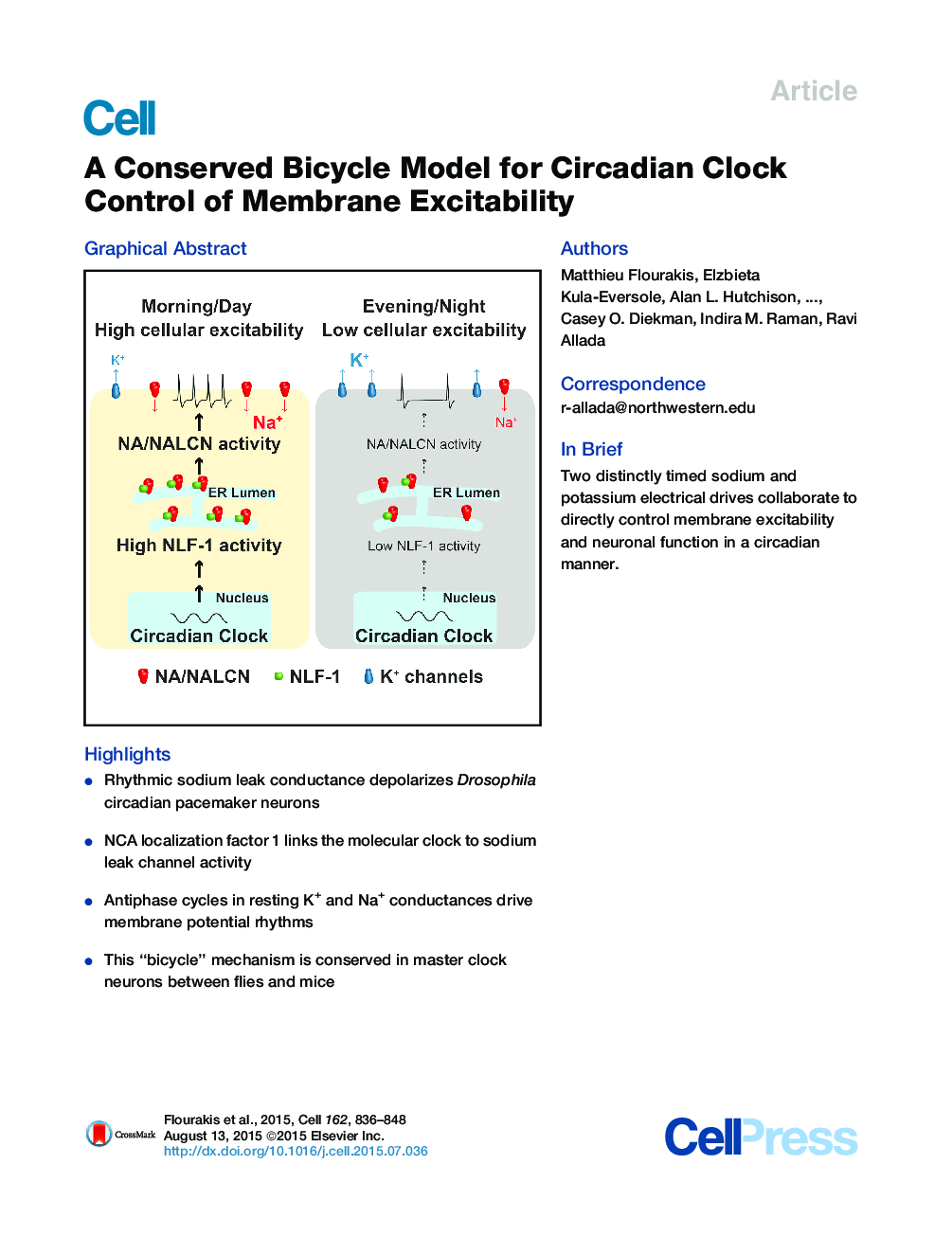| Article ID | Journal | Published Year | Pages | File Type |
|---|---|---|---|---|
| 2035205 | Cell | 2015 | 13 Pages |
•Rhythmic sodium leak conductance depolarizes Drosophila circadian pacemaker neurons•NCA localization factor 1 links the molecular clock to sodium leak channel activity•Antiphase cycles in resting K+ and Na+ conductances drive membrane potential rhythms•This “bicycle” mechanism is conserved in master clock neurons between flies and mice
SummaryCircadian clocks regulate membrane excitability in master pacemaker neurons to control daily rhythms of sleep and wake. Here, we find that two distinctly timed electrical drives collaborate to impose rhythmicity on Drosophila clock neurons. In the morning, a voltage-independent sodium conductance via the NA/NALCN ion channel depolarizes these neurons. This current is driven by the rhythmic expression of NCA localization factor-1, linking the molecular clock to ion channel function. In the evening, basal potassium currents peak to silence clock neurons. Remarkably, daily antiphase cycles of sodium and potassium currents also drive mouse clock neuron rhythms. Thus, we reveal an evolutionarily ancient strategy for the neural mechanisms that govern daily sleep and wake.
Graphical AbstractFigure optionsDownload full-size imageDownload high-quality image (204 K)Download as PowerPoint slide
